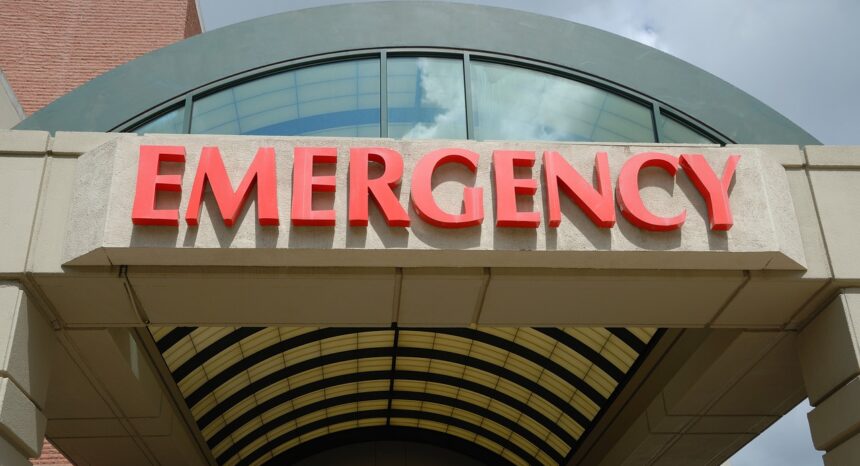Low-income individuals, especially those without medical insurance, often rely on emergency rooms for basic health care. Many emergency rooms (ERs) in the United States have a legal mandate or mission to offer treatment regardless of someone’s ability to pay. ERs also tend to be more expedient as patients are seen relatively quickly and are not asked to come back days or weeks later for an appointment. As policymakers nationwide consider health care improvements and ways to control the rising cost of treatment, one area of focus is trying to understand the reasons some people go to emergency rooms for non-urgent problems — earaches and chronic disease management, for example — instead of seeking help at a less expensive outpatient or office-based facility.
Research in more recent years has revealed multiple reasons for the trend. A February 2016 report from the U.S. Department of Health and Human Services indicates that uninsured adults are more likely than adults with private health insurance or Medicaid to go to ERs because of a lack of access to other providers. A 2013 study led by researchers at the University of Pennsylvania and the Philadelphia Veterans Affairs Medical Center suggests that poor people in urban areas go to hospitals because they believe they provide higher quality care than primary-care agencies such as doctor’s offices. They also perceive it as being less expensive and more accessible. In early 2016, a partnership of organizations that includes the Harvard School of Public Health released a report detailing the results of eight polls designed to collect information about patients’ perspectives on U.S. health care. The polls found, among other things, that “47 percent of patients say they received care in the ER because other facilities were not open or they could not get an appointment, they felt the ER was the only place that would treat them, or because other facilities were too far away.” The report also shows that nearly one-quarter of respondents said they went to the emergency room for treatment of minor issues such as a sprain or toothache.
The American Dental Association has noted that people are going to emergency rooms more often for the treatment of dental problems, which is problematic because most ERs do not have dentists on staff. ER dental visits rose from 2.11 million in 2010 to 2.18 million in 2012, according to a 2015 research brief from the American Dental Association’s Health Policy Institute. ER dental visits almost doubled between 2000 and 2010, a 2013 research brief shows. In 2012, ER dental visits cost the U.S. health care system $1.6 billion — $749 per visit, on average.
A 2015 study published in The Journal of the American Dental Association explores why adults go to emergency rooms instead of dental clinics for dental problems. The study, “Visits to U.S. Emergency Departments by 20- to 29-year-olds with Toothache During 2001-2010,” focuses on young adults, the age group that accounts for the greatest number of ER visits for toothaches. The researchers, led by Charlotte W. Lewis of the University of Washington’s School of Dentistry, analyzed data on emergency room visits from the National Hospital Ambulatory Medical Care Survey, conducted annually by the U.S. National Center for Health Statistics.
Key findings of the study include:
- From 2001 to 2010, ER visits for tooth pain rose 6.1 percent per year, on average, among young adults.
- In 2009-2010, 42 percent of the people who went to emergency rooms with toothaches were aged 20 to 29.
- Toothache was one of the main reasons individuals in this age range visited the ER. Tooth pain was the fifth most common reason for all 20- to 29-year-olds. It was the third most common reason among members of this age group who did not have health insurance.
- About 40 percent of emergency room visits for young adults with toothaches occurred in the South. Meanwhile, almost 19 percent of visits were in the Northeast, nearly 25 percent were in the Midwest and nearly 17 percent were in the West.
The authors state that this study indicates a need to reconsider how dental care is delivered to meet the needs of adults, especially young adults. Maintaining dental coverage from childhood through the early years of adulthood could help bridge the gap in coverage until adults can acquire dental coverage through employers. The authors stress that dental disease should be viewed in the same way as other preventable medical problems and should receive the same level of funding and monitoring. They also argue that it is not enough to simply redirect adults to dental offices, that finding solutions to the problem will be complicated. “Redirecting ED [Emergency Department] patients with toothaches to a source of definitive dental care does not address the underlying missed opportunities for preventive and restorative dental care, but it is an essential step to alleviate ongoing reliance on EDs,” the authors state.
Related research: A March 2014 study from the Rutgers Center for State Health Policy, “Use of Emergency Departments for Non-Traumatic Oral Care in New Jersey,” examines the demographics of those who seek dental care from hospital emergency rooms and their reasons. A 2015 study led by the University of Tennessee, “Neighborhood Socio-Economic Context and Emergency Department Visits for Dental Care in a U.S. Midwestern Metropolis,” found that individuals who are most likely to go to the ER for dental care live in low-income areas or areas where a higher proportion of residents do not speak English at home. A 2006 study published in The Journal of the American Dental Association, “Increasing Prevalence of Emergency Department Visits for Pediatric Dental Care, 1997–2001,” reveals a large increase in ER visits and hospital admissions for “nontraumatic” dental problems among children.
Keywords: emergency room, emergency department, dental care, dentist, tooth decay, access to care, Affordable Care Act, young adults

Expert Commentary